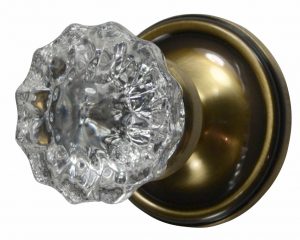Historic homes have many charms, but those who live in older houses typically find that certain parts of the house are not suited for the modern lifestyle. Updating a historic house while still keeping all of the things that make it special requires an educated and careful approach. If you have fallen in love with a historic home, there are a few things you need to consider before you jump into renovations.
Look Into Regulations for Your Area
Remodeling historic homes in Colorado Springs is actually not as restrictive as many people assume it will be. You typically do not have to keep the house looking like it is straight out of the 1800s on the inside and outside, and many improvements can be incorporated into normal maintenance. However, depending on the age and significance of a  house, there may be certain regulations you have to follow when renovating.
house, there may be certain regulations you have to follow when renovating.
For example, if you are lucky enough to get a beautiful home in the Colorado Springs Historic District, there are very specific standards and requirements you have to consider when making any changes to the exterior of the property. Some properties may also have conservation easements that limit what future buyers may do.
It is a good idea to meet with local historic organizations, real estate attorney, and conservation commissions to talk about remodeling restrictions before you begin. This helps you avoid potential problems later on.
Know What Types of Repairs You Will Typically Need
Each historical building is different, but they do tend to encounter the same types of issues as they age. According to the Historic Savannah Foundation, almost all homes for sale in Historic Savannah, GA need repairs to windows, wood siding, masonry, and ironwork when homeowners are renovating the houses.
These sorts of exterior repairs occur because moisture and shifting temperatures inevitably causes some cracking, warping, and deterioration. Do not make the mistake of dismissing these sorts of repairs as primarily cosmetic. They are actually necessary because they keep moisture and insects from penetrating the interior structure of the building. As the oldest city in Georgia, it is easy to see that Savannah is filled with stunning nineteenth-century architecture.
Work With Professionals Who Know Historic Buildings
The average contractor might do a decent job at fixing a mid-century home in the suburbs, but working on a historic home requires a lot of expertise and focus. The key to having successful renovations is finding architects and contractors who follow a historic building stewardship program, or equivalent.
 You may be able to get recommendations from local historic home organizations, or you can ask other historic homeowners to see who they used for their renovations. Take the time to interview and get estimates from several people before selecting the best. A top-notch professional will help you to get the house of your dreams while preserving important historical details.
You may be able to get recommendations from local historic home organizations, or you can ask other historic homeowners to see who they used for their renovations. Take the time to interview and get estimates from several people before selecting the best. A top-notch professional will help you to get the house of your dreams while preserving important historical details.
Expect Plenty of Time and Effort to Install Modern Conveniences
The typical historic home has probably been through a few remodels here and there, so you can expect to have non-historic plumbing and wiring in most places. Trying to just add a few extra sinks and outlets to the existing structure can actually end up making your renovation more difficult. Instead of trying to work with a lot of plumbing and wiring from various eras, many homeowners find it more efficient in the long run to just remove everything and start from scratch.
It can be scary to contemplate such a huge change to the house you have fallen in love with, but the end results can be worth it. Being willing to spend a lot of time and effort lets you end up with a home that retains its historic look while still being able to house plenty of electronics, modern plumbing fixtures, and appliances.
Design Around Historical Details
It is easy for tiny historic features to get ignored and removed while homeowners are focusing on big things like bedroom square footage and cabinet layout. Before you start making these big changes, take the time to truly discover and appreciate all the tiny historic features of your home.
while homeowners are focusing on big things like bedroom square footage and cabinet layout. Before you start making these big changes, take the time to truly discover and appreciate all the tiny historic features of your home.
Historic design elements like ornate moldings, crystal door knobs, bedroom fireplaces, decorative brackets, and more are part of what makes a historic house special. Working all of these original features into your design lets you create an updated home that still celebrates the house’s origins.

